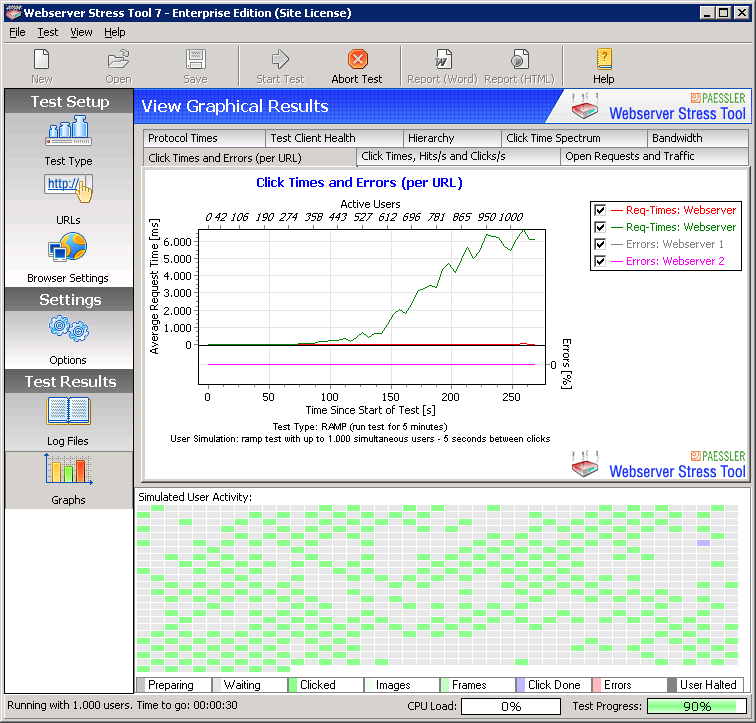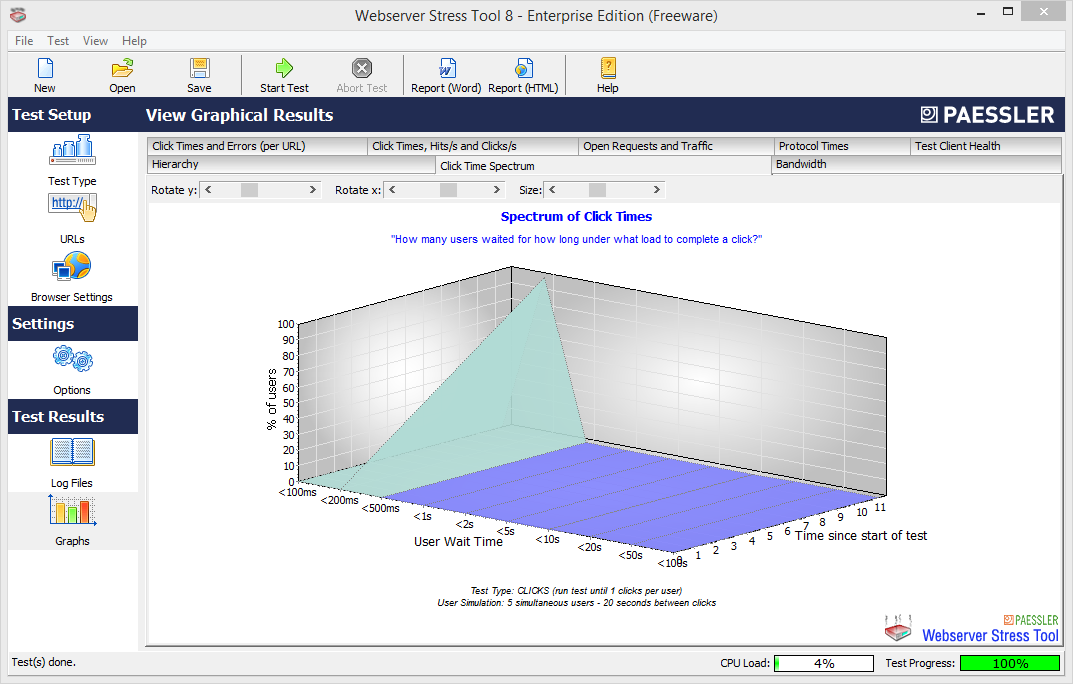 This tool is not supported anymore
This tool is not supported anymore
Please leave a message and we will get back to you shortly.
Free performance, load, and
stress test for web servers
Webserver Stress Tool is a powerful HTTP-client/server test application designed to pinpoint
critical performance issues in your website or web server that may prevent optimal experience
for your site's visitors.
By simulating the HTTP requests generated by hundreds or even thousands of simultaneous users, you can test your web server performance under normal and excessive load to ensure that critical information and services are available at a speed that your end-users expect.
Detailed test logs and several easy-to-read graphs make analyzing results a snap. Webserver Stress Tool for Windows (2003 R2, Vista, 7, 2008) can benchmark almost any HTTP server (like static pages, JSPs/ASPs, or CGIs) for performance, load, and stress tests.
Test Setup
| Test Type | RAMP |
| Number of Users | 1,000 |
| Click Delay | 5 sec |
| Tested Web Server | DELL Optiplex 7010, one CPU, 4 cores, Intel Core i5-3550S @ 3 Ghz, |
| Test Client | DELL R710 Server with two CPUs, 24 cores, Intel Xeon X5650 @2.67 Ghz, 128 GB RAM, Windows 2008 R2 (running Webserver Stress Tool) |
Comments: This test was run without image download.
Performance Test Samples and Screenshots
In our Sample Performance Tests section you can find a collection of test reports with detailed information about setup and results. This screenshot, for example, shows the spectrum of click times.
Why use a Webserver Stress Tool?
Use the Webserver Stress Tool to develop your web infrastructure and to permanently run successful websites:
- Maximize Uptime: Resolve critical performance issues in your web server before they bring your website down
- Maximize Performance: Make sure that your websites and applications are given the server resources they need to guarantee a high-quality user experience
- Maximize ROI: Get everything out of the investment in your web server technology through consistent and in-depth testing and analysis
- Minimize Efforts: The software installs in 5 minutes and works with all web servers
- Read more about the features
How much load can Webserver Stress Tool generate?
We have successfully tested Webserver Stress Tool 8 with
- more than 500 Mbit/s network load
- more than 1,000,000 pageviews per hour and
- up to 10,000 simultaneous users
See our Sample Performance Tests section for detailed test reports. The actual load you can achieve is highly dependent on your network infrastructure, your server/client hardware, the file sizes, and your web application. We also provide screenshots of Webserver Stress Tool.

